Using a combination of modern technology and a wealth of human knowledge and experience, NTBG has been exploring the Pacific, discovering, and saving plants for more than fifty years. As 2021 comes to a close, take a moment to reflect and celebrate some of the exciting rare plant discoveries we made this year.
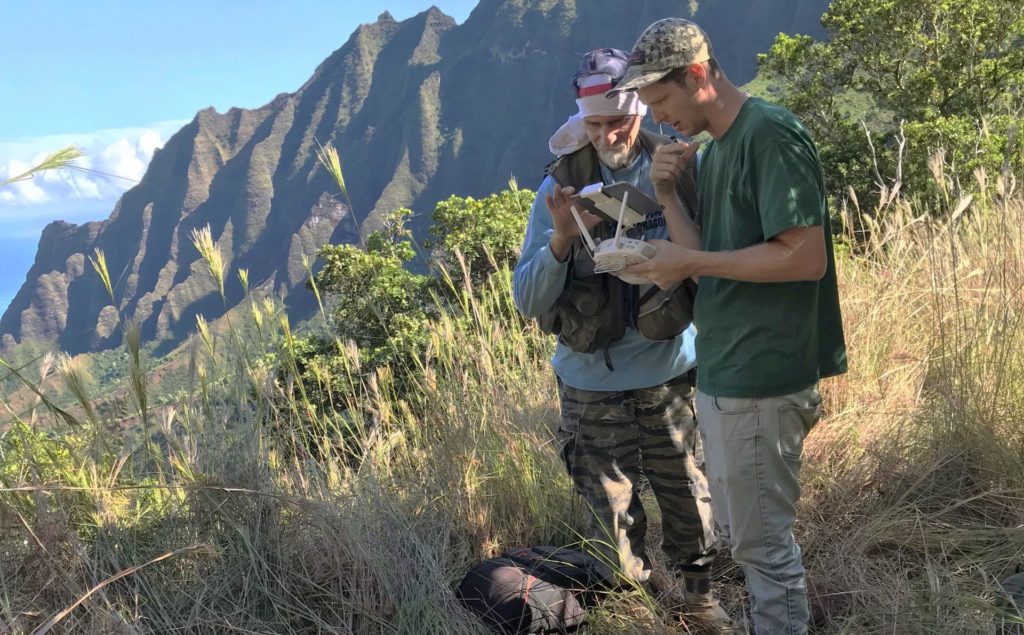
When you spend a lot of time in one place or ecosystem, your subconscious mind becomes very familiar with what is around you. When we are flying the drone, that subconscious awareness bubbles up and gives us a good idea of where to look for these endangered plants.
Field Botanist, Ken Wood & Drone Specialist, Ben Nyberg on searching for and discovering rare plants
Growing on the knife-like edges of Kauai’s iconic cliffs, Euphorbia eleanoriae was down to just one known population with less than fifty individuals. Using drone technology, NTBG discovered new populations in multiple locations from Honopu all the way up to the North Shore of Kauai. Multiple samples were collected for storage and cultivation. The Hawaiians named Euphorbia species, akoko, for it’s white, blood-like sap. Koko is the Hawaiian word for blood. These recent drone related discoveries have led to this species being removed from the Plant Extinction Program list, an encouraging development.
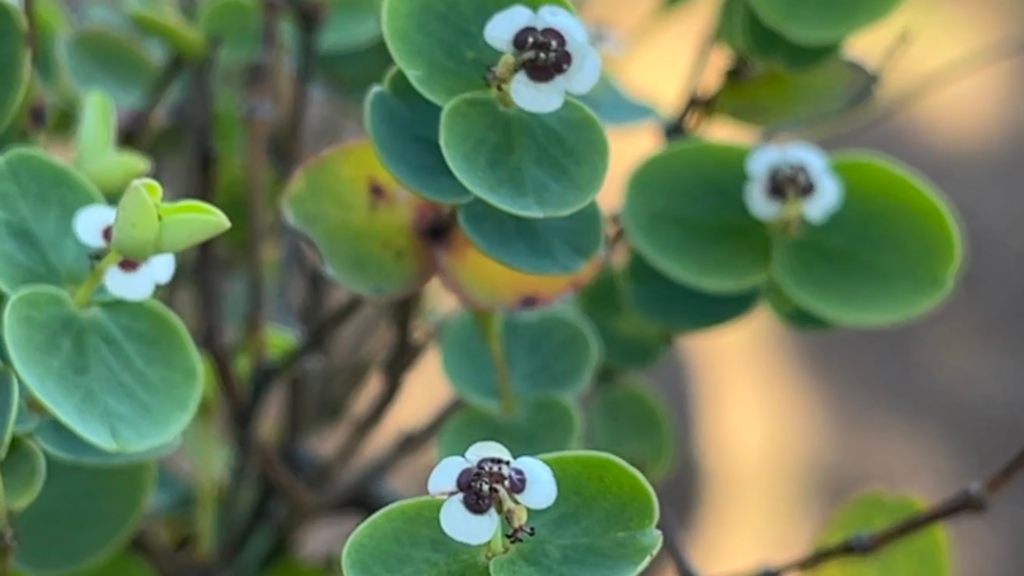
Surprising discoveries still occur in the botanical world and Melicope nealae is a great example of one. Prior to its recent re-discovery, this species had only two recorded sightings in over 100 years. Originally collected around 1909 in the center of the canyon of Kauai, it wasn’t seen again until 1960 and remained elusive through the end of the century. In 2015, NTBG received a grant from the U.S. Fish and Wildlife Service to search for Melicope nealae. While Field Botanist Ken Wood made other plant discoveries during his search for Melicope, he never found the intended species. All that changed a little over a year ago when one individual of Melicope nealae was rediscovered. This single individual flowered and went into fruit (pictured here), but conservationists have not yet been able to cultivate it. NTBG has teamed up with the Plant Extinction Prevention Program (PEPP) and are currently working on a cultivation plan.
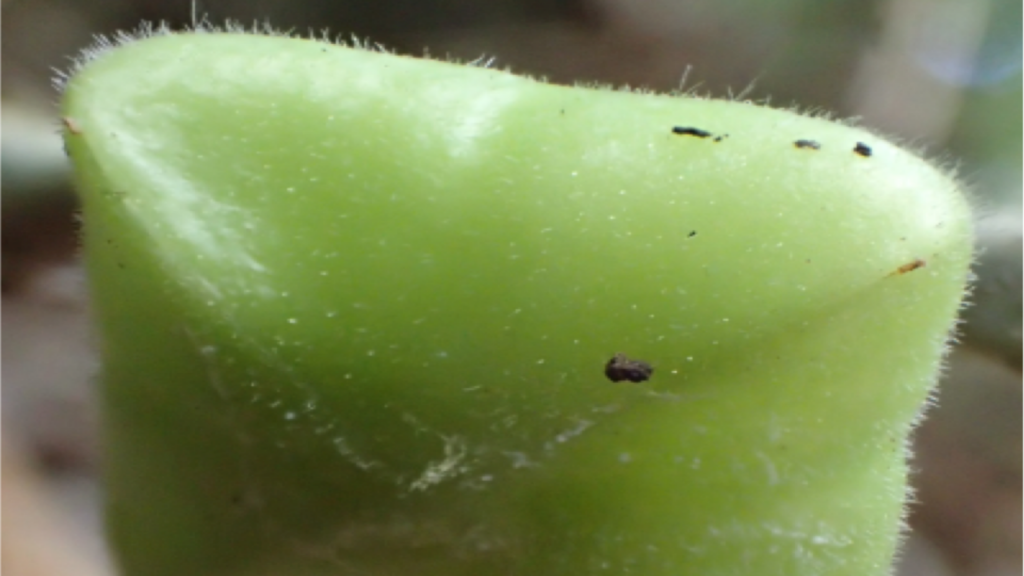
Speaking of looking for one thing and finding another…while Wood and Nyberg were exploring an area of Waimea Canyon searching for Hibiscadelphus distans, Nyberg spotted what he thought might be Lysimachia scopulensis through his drone camera. Continued surveys of the area with PEPP and State of Hawaii Division of Forestry and Wildlife revealed eight new populations of this species with more than one-hundred plants. These new discoveries led to seed collections which are now growing in our Conservation Nursery.
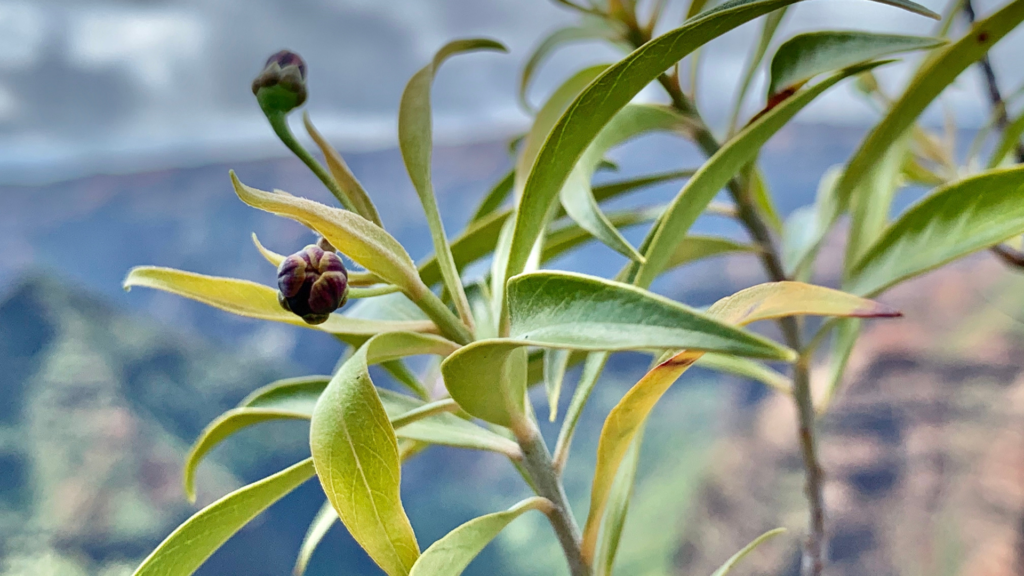
What’s really distinctive about this species is the wooly-like hairs on its fruit capsules. It was collected once sometime between 1864-1865 and was never seen again. Behind a waterfall surrounded by echoes of a raging stream, Ken Wood recently discovered a small colony of these Euphorbias. He was able to collect an herbarium voucher and seeds at the time of discovery. Although the seeds collected were not successfully grown, this is an exciting discovery with future opportunities for seed collection.
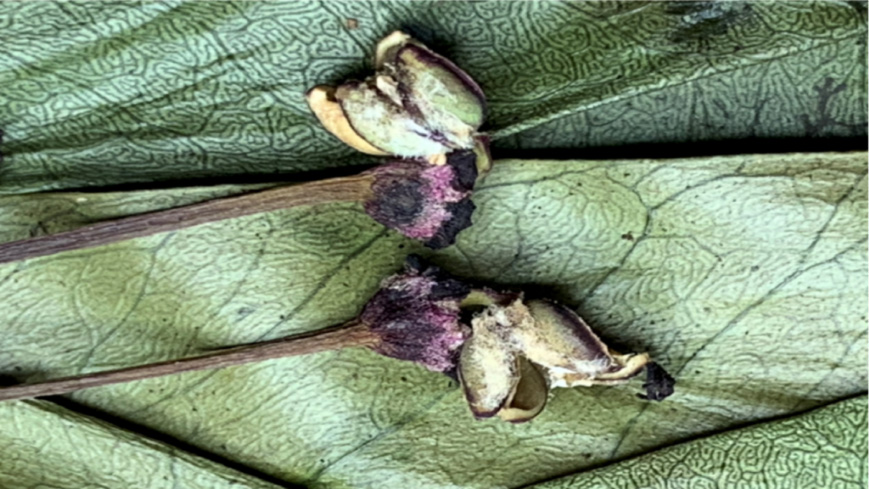
While surveying the wet cliffs of Kauai looking for Lysimachia iniki, Nyberg spotted dark green, heart-shaped leaves growing out of a rocky outcropping. Cyanea asarifolia was known to occur in one area a few valleys away prior to this discovery. One day of drone surveying nearly doubled this species’ abundance with a really robust and vigorous population. This species has been difficult to locate as it is one of the few species of Cyanea that prefers to grow on vertical cliffs.
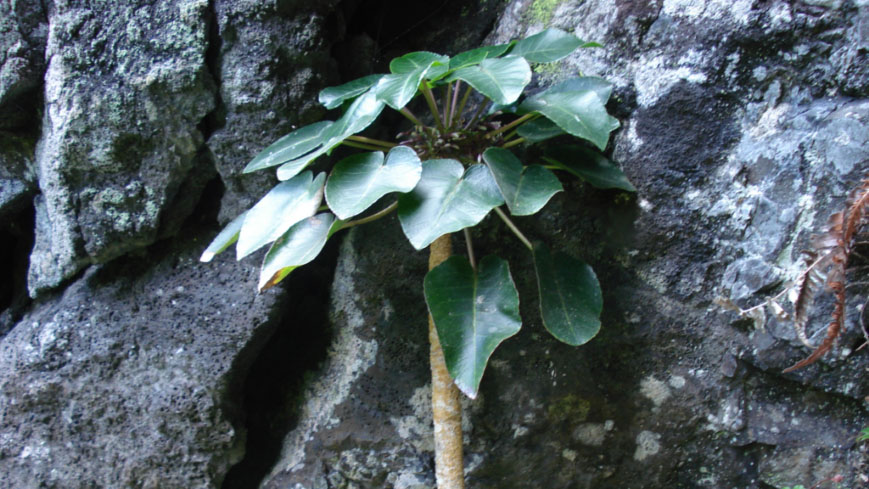
Even though there are a lot of sad plant stories, there’s also joyous ones and Cyanea kuhihewa was one of those. This linear leaf cyanea species was first discovered by NTBG staff in Upper Limahuli Preserve. Unfortunately, the species went extinct after the population was destroyed by the 1992 hurricane. Although Cyanea kuhihewa had never been successfully cultivated, another population was recently discovered. “It was like water on a dry leaf,” said Wood. With PEPP cooperation, Wood went back to the newly discovered colony several times to bag and protect flowers and fruit and eventually collected several thousand seeds giving NTBG and it’s conservation partners hope for this species in the future.
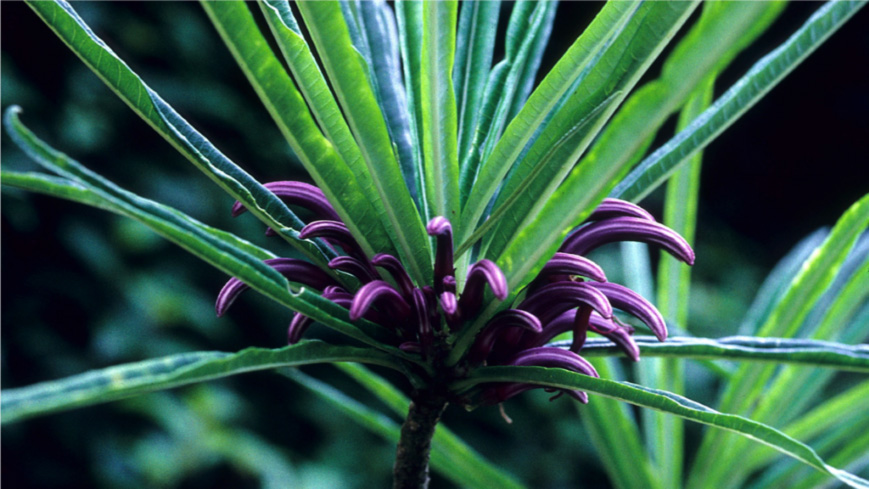
Want to learn more about plant discoveries? Check out the webinar recording below. For decades, NTBG has been roaming the mountains and valleys of the Hawaiian island of Kauai by foot, helicopter, rappelling and more recently, using drones. Field Botanist Ken Wood & Drone Specialist Ben Nyberg share their stories, methods and experience during this special webinar.